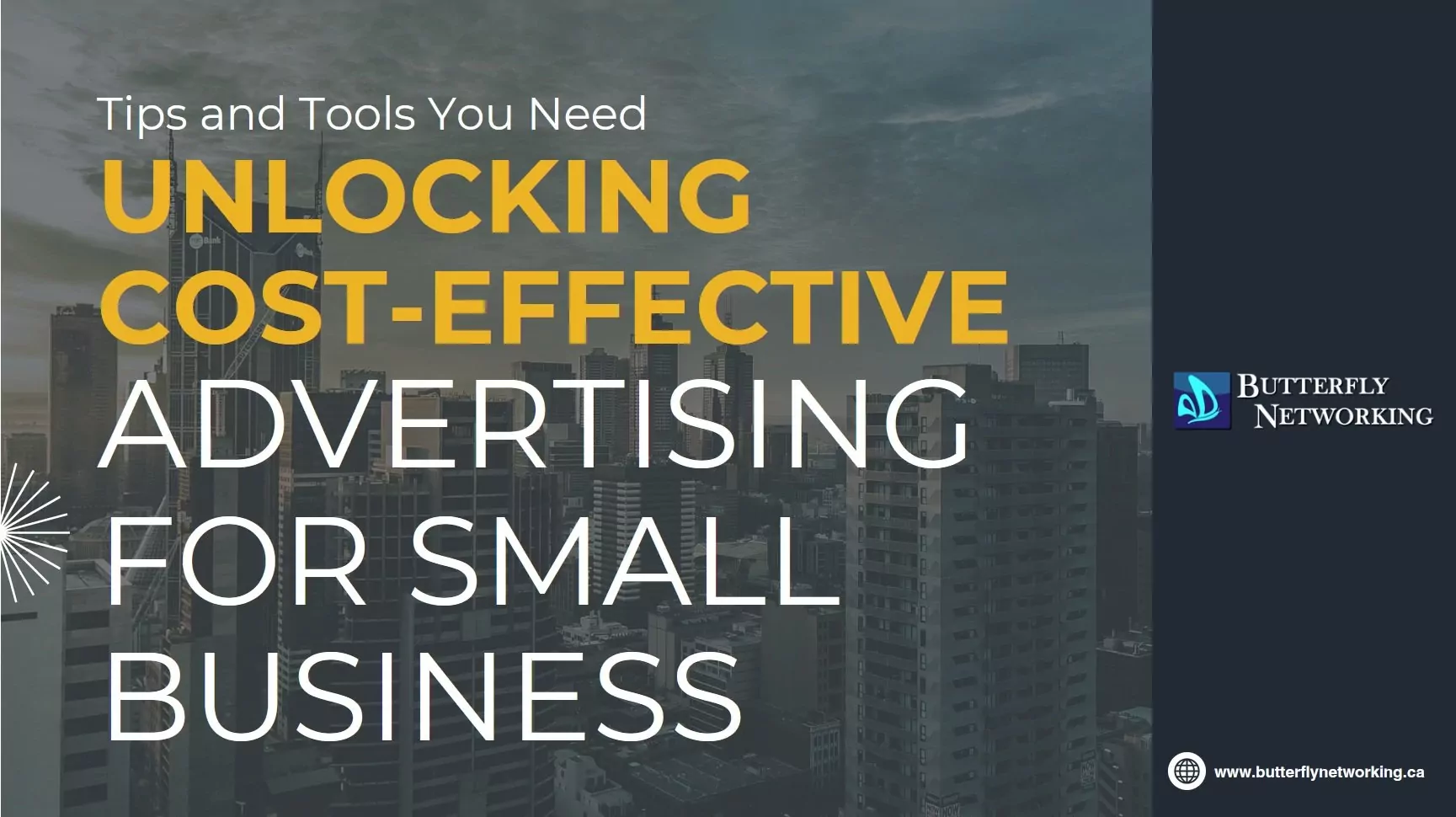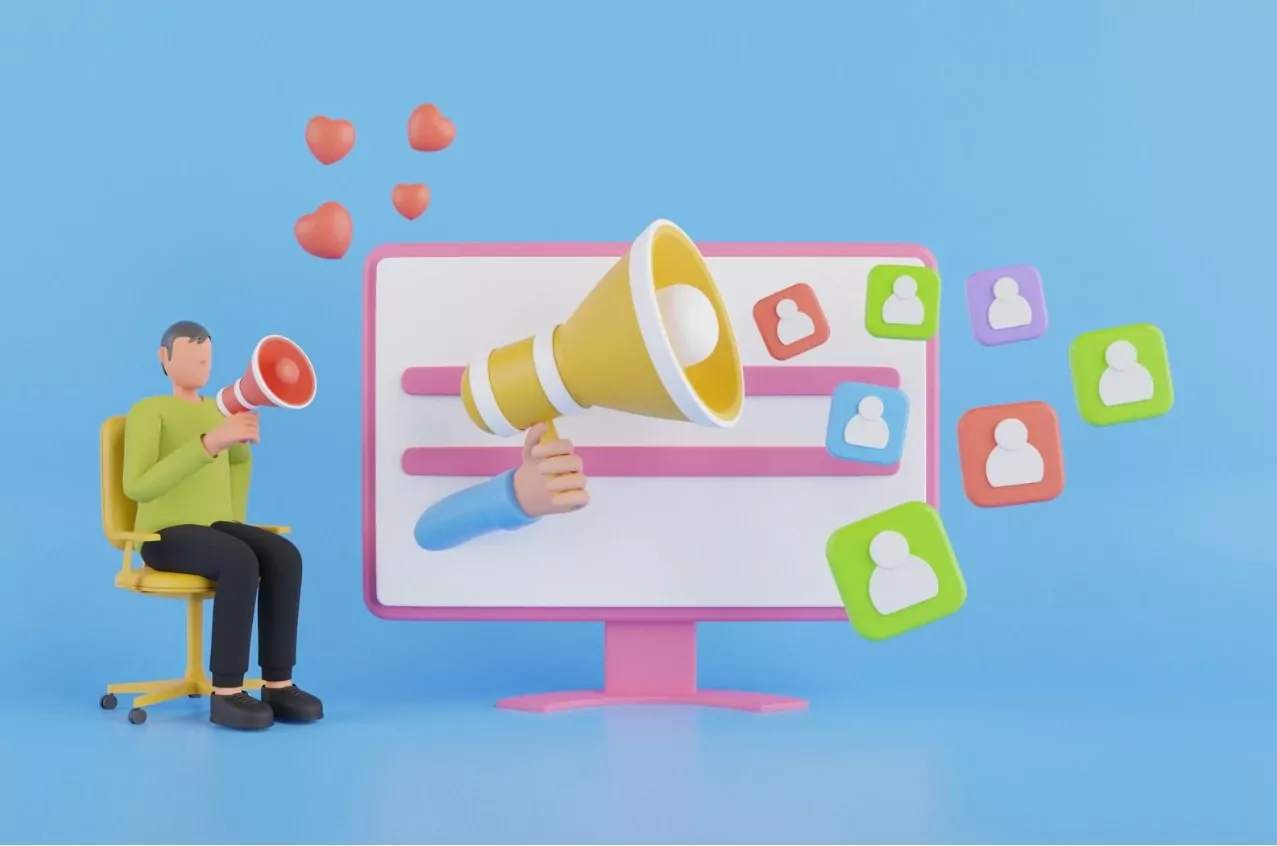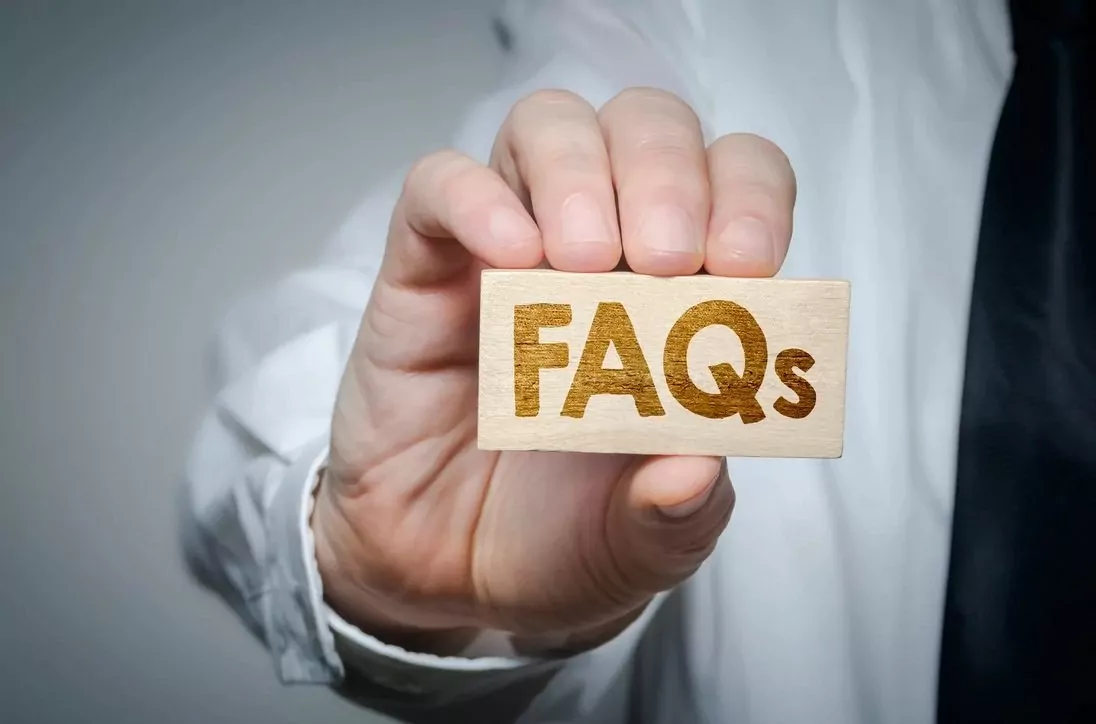Unlocking Cost-Effective Advertising for Small Business: Tips and Tools You Need
Maximize your marketing budget with practical tips and essential tools tailored for small business success.

Cost-effective advertising for small business is more than a budget constraint; it is a strategic advantage when you know where to focus. With limited time and resources, small teams can win by pairing sharp messaging with the right local channels and relentless measurement. In New Westminster and across the Lower Mainland, small businesses are competing for attention in crowded feeds and search results, so clarity and consistency matter. This guide distills proven frameworks, real examples, and practical tools to help you stretch every dollar and still scale results. You will learn how to prioritize high-ROI foundations, leverage free and low-cost platforms, and apply data to double down on what works. Whether you are just getting started or optimizing existing campaigns, these steps will help you reach the right people at the right moment and convert interest into revenue.
Build a high-ROI foundation for cost-effective advertising for small business

Great campaigns begin with a strong foundation, and that means clearly defining your ideal customer and the problem you solve. Start by mapping your audience's pains, triggers, questions, and desired outcomes, then turn those into specific messages and offers. For example, a New Westminster fitness studio could segment commuters who want a 30-minute lunch workout versus parents looking for evening classes. That clarity lets you choose channels, craft headlines, and set budgets that align with actual buyer intent. Most small businesses waste money not because ads are expensive, but because the wrong message is shown to the wrong person at the wrong time. Invest in the foundation and every subsequent tactic becomes more cost-effective.
Turn your insights into a simple value proposition that fits into a single sentence and can anchor every ad and landing page. A helpful framework is Problem - Solution - Proof - Action, which forces you to show credibility before asking for a click or call. Use social proof such as reviews, case studies, and numbers that tie directly to outcomes customers care about. For a local cafe, this could be highlighting 500+ five-star reviews and a promise of 5-minute pickup during the morning rush. When your promise is specific and credible, click-through rates and conversion rates increase, which automatically lowers your cost per acquisition. Measurable claims outperform vague claims every time.
Build a minimum viable measurement plan before you spend a dollar on ads so you know what success looks like. Choose one or two primary metrics tied to revenue, such as cost per lead, cost per sale, or lifetime value to cost ratio. Set up conversions for phone calls, form submissions, directions requests, and online purchases, depending on your model. Align your team on a weekly cadence to review spend, clicks, leads, and sales so you can quickly prune what is not working. A simple spreadsheet or dashboard is enough early on; the discipline of weekly decisions is what compounds results. Clarity, consistency, and cadence make small budgets punch above their weight.
Own low-cost channels: local SEO, Google Business Profile, and content for cost-effective advertising for small business

Local SEO is often the highest-ROI channel for brick-and-mortar businesses because intent is high and clicks can be free. Start with your Google Business Profile to ensure your name, address, phone, categories, hours, and services are accurate and consistent. Add photos, products, services, and weekly posts to increase visibility in the local pack, and actively request reviews after each sale. A New Westminster florist that asked for reviews via a QR code at checkout saw a 40 percent increase in calls and a 22 percent rise in map views in 60 days. This compounding momentum reduces the need for heavy ad spend and keeps you front and center when customers search nearby.
Your website should support local SEO with location pages, service pages, and helpful blog content that answers real buyer questions. Add schema markup for local business, FAQs, and products to improve search snippets and click-through rates. Create content that solves a specific problem, such as a guide to picking seasonal bouquets or a 10-minute meal-prep checklist for busy families. Internal linking from blogs to service pages signals relevance and directs readers toward conversion paths. If you serve multiple neighborhoods, build pages for each area and include clear CTAs and directions. Over time, these assets drive steady organic traffic and reduce reliance on paid channels.
Repurpose content across platforms to expand reach without additional cost. A single blog post can become short videos, carousels, and email tips that all point back to your primary offer. Pair this with consistent NAP citations across directories to reinforce local authority. As you deploy these assets, remember to anchor back to your priority keyword theme, including phrases like Cost-effective advertising for small business. Combine this with a clear CTA and tracking links to see exactly which pieces move the needle. The more your assets work together, the lower your acquisition costs become.
Use paid ads wisely: search, social, and retargeting that make cost-effective advertising for small business scale

Paid ads can be extremely efficient when tightly targeted and backed by a great offer and landing page. Start with high-intent search terms, layer on geo-targeting around New Westminster, and use ad extensions for calls, sitelinks, and locations. Keep ad groups tight and test two to three headlines and descriptions that mirror the keywords and the landing page. For service businesses, call ads during business hours can outperform lead forms by shortening the path to conversion. A local HVAC company that focused on emergency search terms and call ads saw a 53 percent drop in cost per lead within a month. Every click should feel like a shortcut to the solution.
On social platforms, aim for thumb-stopping creative and simple offers that reduce friction. Short videos and carousel formats showcasing outcomes, testimonials, or before-and-after transformations often outperform generic brand ads. Use small audiences first, such as customer lists and website visitors, then gradually expand to lookalikes. Retarget website visitors with context-based messages that reflect what they viewed, and cap frequency to avoid fatigue. Track cost per add-to-cart, cost per lead, and cost per messaging conversation, not just CPM or reach. Precision beats scale when budgets are lean.
Budget allocation should follow intent: invest more in search and retargeting, then feed top-of-funnel with small tests. Start with daily budgets you can afford to learn with for two to three weeks, then reallocate to the winners. Use UTM parameters on every ad and review assisted conversions in your analytics to avoid cutting helpful channels prematurely. Test checkout incentives or instant booking to lift conversion rates, which lowers acquisition costs across channels. For platform support and playbooks, bookmark Google Ads Help and Meta Business Ads for continuously updated best practices. If you need hands-on help building campaigns, explore our paid ads services to get set up right the first time.
Organic growth engines: email, referrals, and partnerships that amplify cost-effective advertising for small business

Email remains one of the highest ROI channels because you own the relationship and can personalize at scale. Build your list with in-store QR codes, website popups, and lead magnets like checklists, coupons, or mini-courses. Start simple with a welcome series that introduces your story, social proof, and best-selling services over three to five emails. Segment by interest or purchase history to showcase relevant products and increase click-through rates. A New Westminster salon that sent a three-email welcome series with a 15 percent first-visit incentive saw 28 percent more bookings in 30 days. Email turns one-time buyers into repeat customers without additional ad spend.
Referrals convert at higher rates because trust transfers from the referrer to your business. Incentivize referrals with a double-sided reward, such as "Give $10, get $10" or a free upgrade, and make it easy to share via link or QR. Feature happy customers in social content and on landing pages to normalize word-of-mouth. Track referral source codes or ask a "How did you hear about us?" question in your form to attribute results. Partnerships with complementary local businesses can also create win-win exposure for minimal cost. Think co-hosted workshops, bundled offers, or shared giveaways that double your reach overnight.
Tools make execution easier without breaking the bank. Platforms like Mailchimp and Klaviyo offer free or low-cost plans with automation, segmentation, and basic analytics. Use simple templates that match your brand and put clear calls-to-action above the fold. For referral programs, explore lightweight solutions or track via coupon codes if you want to stay scrappy. Keep a monthly rhythm: one value-driven email, one promotional email, and one partner spotlight. Consistency compounds results and lowers your reliance on paid channels.
Creative, landing pages, and measurement: the conversion core of cost-effective advertising for small business

Creative and landing pages are where your budget becomes profit or waste, so give them the attention they deserve. Lead with outcome-focused headlines that match ad promises, supported by a clear subhead and a single primary call-to-action. Use social proof above the fold and make the next step obvious, whether it is booking, calling, or buying. Keep forms short and offer alternatives like "Call now" or "Chat" for visitors who prefer direct contact. A local contractor who reduced a form from eight fields to four saw a 36 percent lift in conversion rate and lower cost per lead. Every point you remove from friction lowers your acquisition cost.
Set up UTM parameters on all campaigns and track conversions with Google Analytics 4 and Google Tag Manager. Map each funnel step and track micro-conversions such as video views, scroll depth, call clicks, and quote requests. Review your numbers weekly: traffic, conversion rate, cost per conversion, and revenue generated. Use A/B tests to compare headlines, images, and offers, changing one element at a time to learn precisely. For qualitative insights, use heatmaps or session recordings to see where visitors get stuck. Data-informed tweaks are the fastest path to cheaper, better results.
Build a simple optimization cadence so improvements are intentional and time-bound. Week 1: test two headlines; Week 2: update hero image; Week 3: simplify form; Week 4: refine offer. Rinse and repeat. Use low-cost design tools to keep creative fresh without expensive production cycles. For strategic support, our services and contact pages outline packages that fit most small-business budgets. For additional playbooks, bookmark Moz Local SEO and Think with Google for research-backed tactics you can apply immediately.
SEO Metadata

Conclusion

Cost-effective advertising for small business is about precision, not volume: the right message, to the right audience, in the right channel, with tight measurement. Start with a strong foundation, then own low-cost local SEO and content while layering in disciplined paid search, social, and retargeting. Build email, referrals, and partnerships to compound returns and reduce reliance on paid clicks. Keep landing pages simple, offers specific, and analytics instrumented so you can improve weekly. When you combine focus, consistency, and data, every dollar goes further and growth becomes predictable.
Explore our services and recent insights on the blog to see how we drive measurable results for local businesses. Let's turn your marketing into a growth engine with clear targets, clean tracking, and creative that converts. Your next best customer is already searching nearby; we will help them find and choose you.
Need help making marketing less mysterious? Let's chat! Carla@ButterflyNetworking.ca | 778-835-4032 | or book a call https://askCarla.ca/15MinuteConsultation
Frequently Asked Questions

How much should a small business spend on advertising?
A common starting point is 5-10 percent of gross revenue, with higher percentages for newer businesses seeking growth. Allocate more toward channels that show high intent and measurable results, such as search and retargeting. If your sales cycle is short and margins are healthy, you can spend more aggressively and still maintain profitability. Build a monthly budget you can afford to test for two to three cycles, then concentrate spend on proven winners. Track cost per lead and cost per sale, not just impressions and clicks. Over time, aim to align spend with customer lifetime value so you comfortably acquire customers below your profitability threshold.
What is the most cost-effective advertising channel for small businesses right now?
For local, service-based businesses, a properly optimized Google Business Profile and local SEO usually deliver the highest ROI. High-intent search ads are next, especially when paired with strong landing pages and call extensions. Organic email and referrals provide compounding returns because you own the audience and can nurture relationships at low cost. Social can be effective for demand generation and retargeting, particularly with short videos and testimonial creatives. The most cost-effective channel is the one that consistently generates profitable conversions at or below your target CPA. Measure weekly, shift budget accordingly, and double down on what your data proves is working.
How can I track ROI without expensive software?
Set up Google Analytics 4 and Google Tag Manager, then define conversions for the actions that matter most to your business. Use UTM parameters on every link in ads, emails, and social posts so you can attribute results accurately. Track phone calls using call extensions and call tracking numbers if phone leads are important. Build a simple dashboard or spreadsheet that shows spend, leads, sales, and revenue by channel. Review results weekly and annotate changes so you know what drove improvements. This lightweight stack is more than enough to make smart, ROI-focused decisions on a small-business budget.
How long does it take to see results from these strategies?
Local SEO and Google Business Profile optimizations can start producing measurable improvements within four to eight weeks. Paid search can drive leads within days, especially for high-intent keywords and call ads during business hours. Email marketing and referrals typically compound over one to three months as your list grows and campaigns mature. Expect to test and refine creative, offers, and landing pages in the first 30-60 days to reduce acquisition costs. The key is consistent execution and weekly iteration based on data. With discipline, most small businesses see meaningful traction within the first quarter.
Do offline tactics still work for small budgets?
Yes, when paired with sharp targeting and trackable offers, offline tactics can be very efficient. Flyers with QR codes, door hangers, and partnerships with complementary local businesses can drive high-intent visits. Sponsor community events where your customers already gather, and capture emails or offer SMS opt-ins to continue the conversation. Use unique codes or dedicated landing pages to measure which offline activities convert. Combine offline efforts with online retargeting to stay top of mind after the first interaction. A blended approach often yields the best results for small businesses serving a defined geography.
